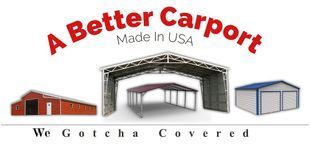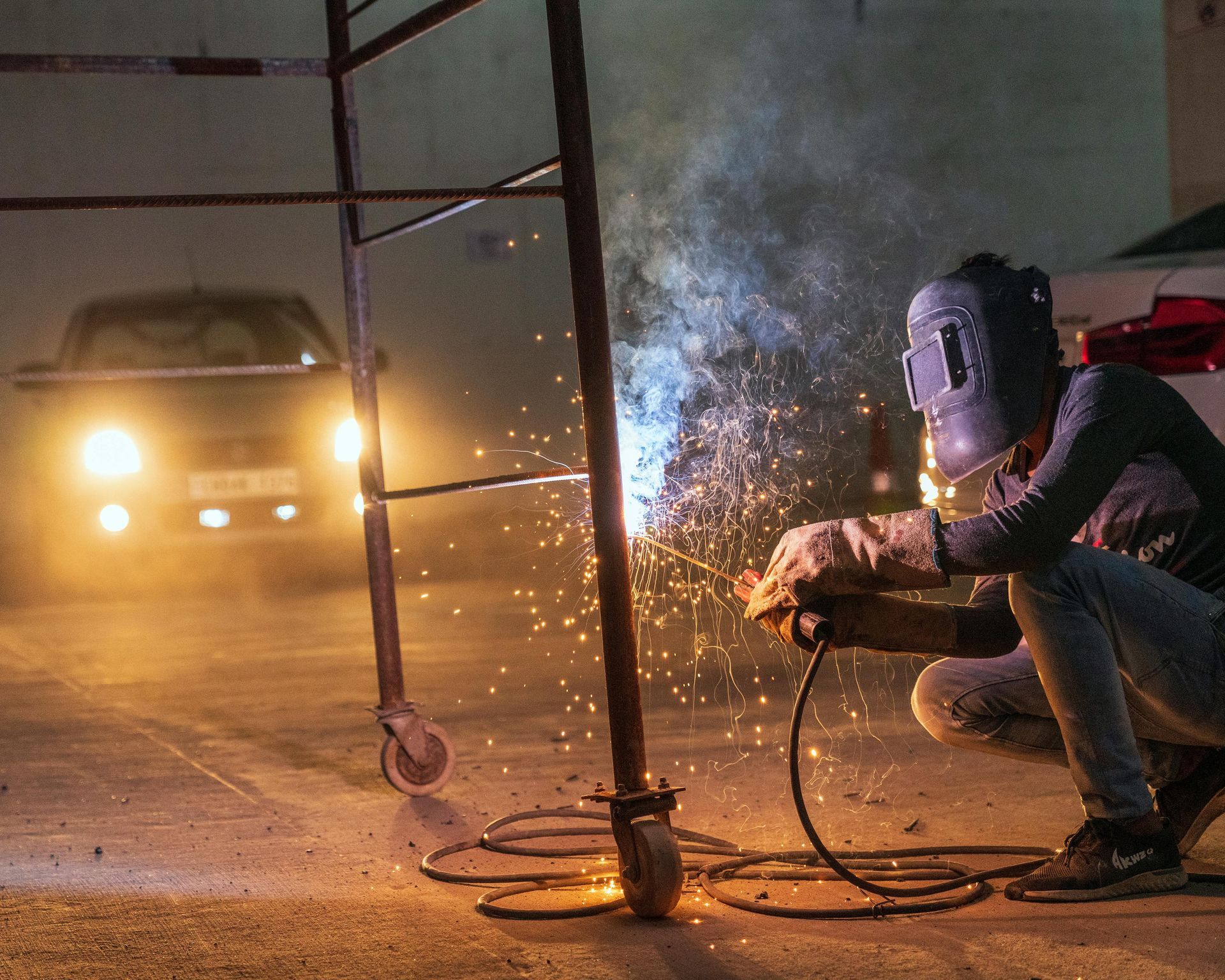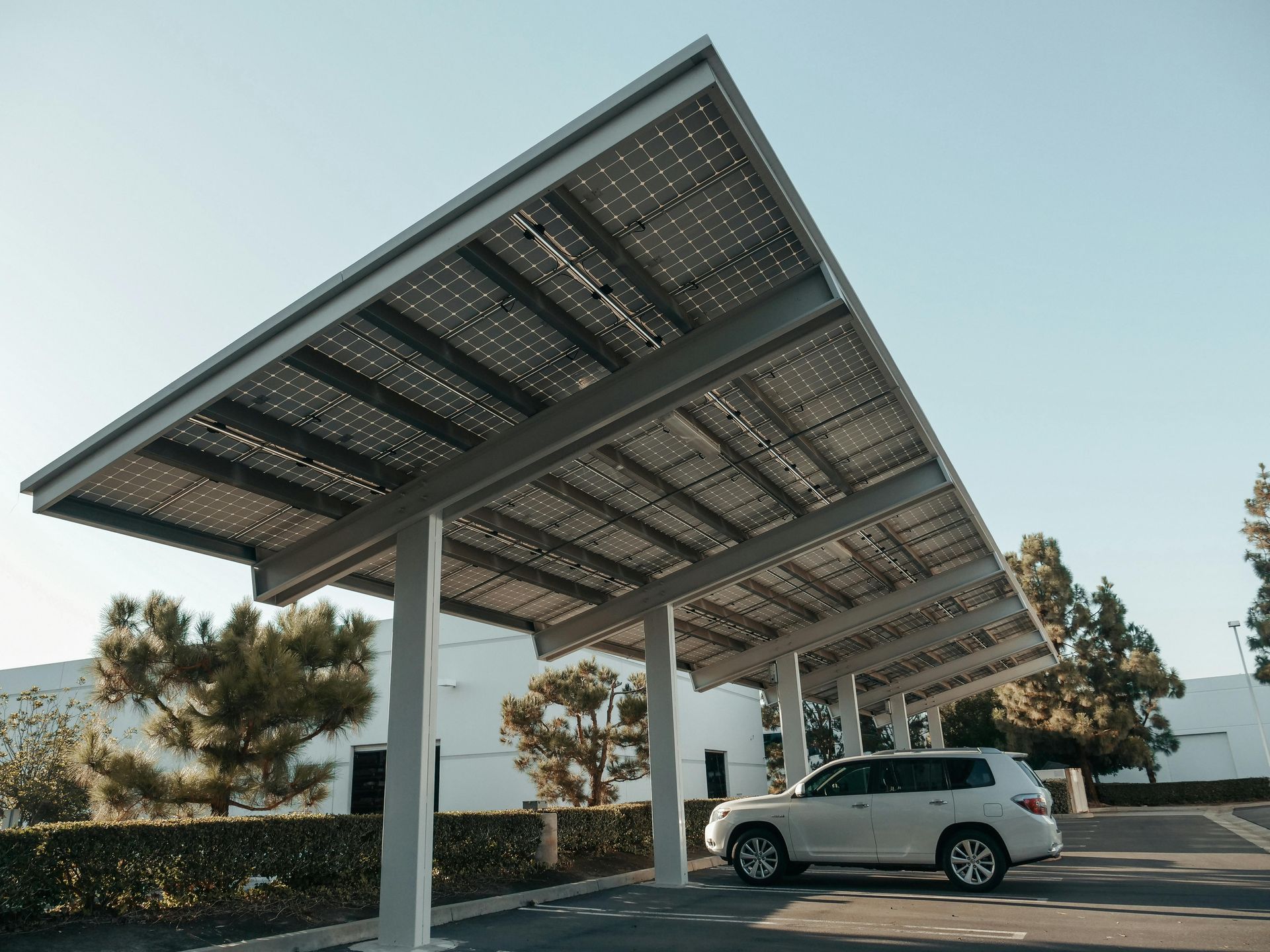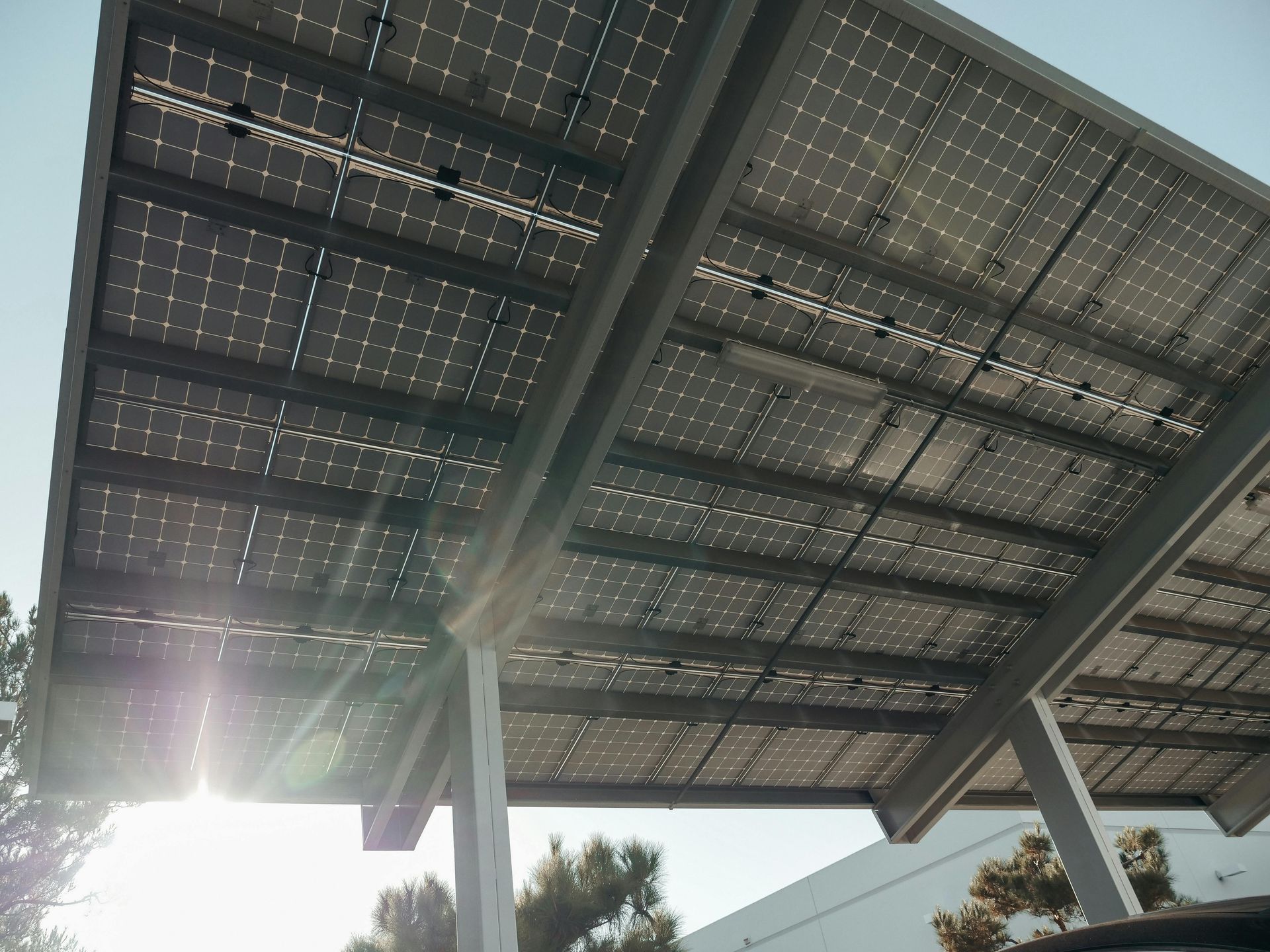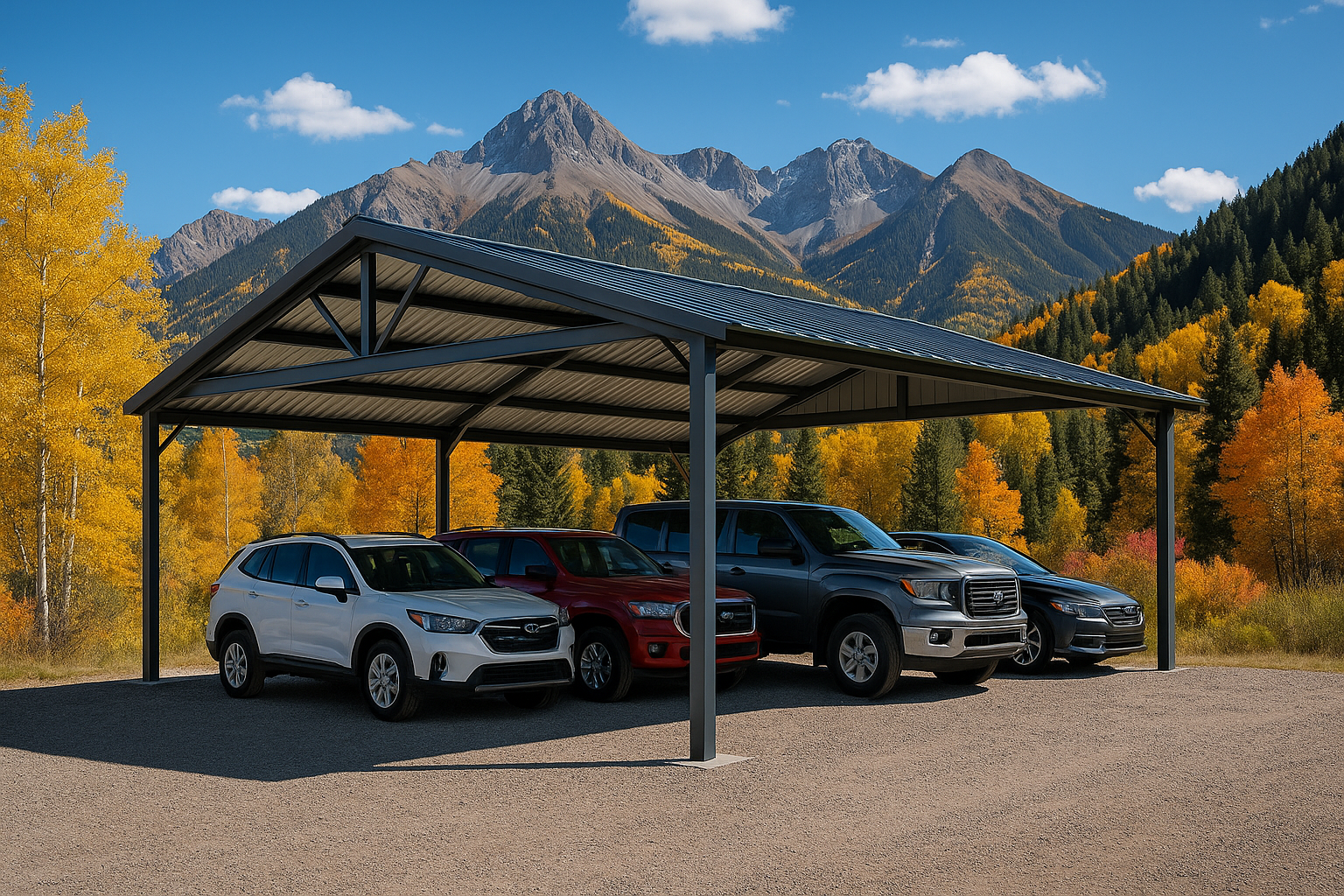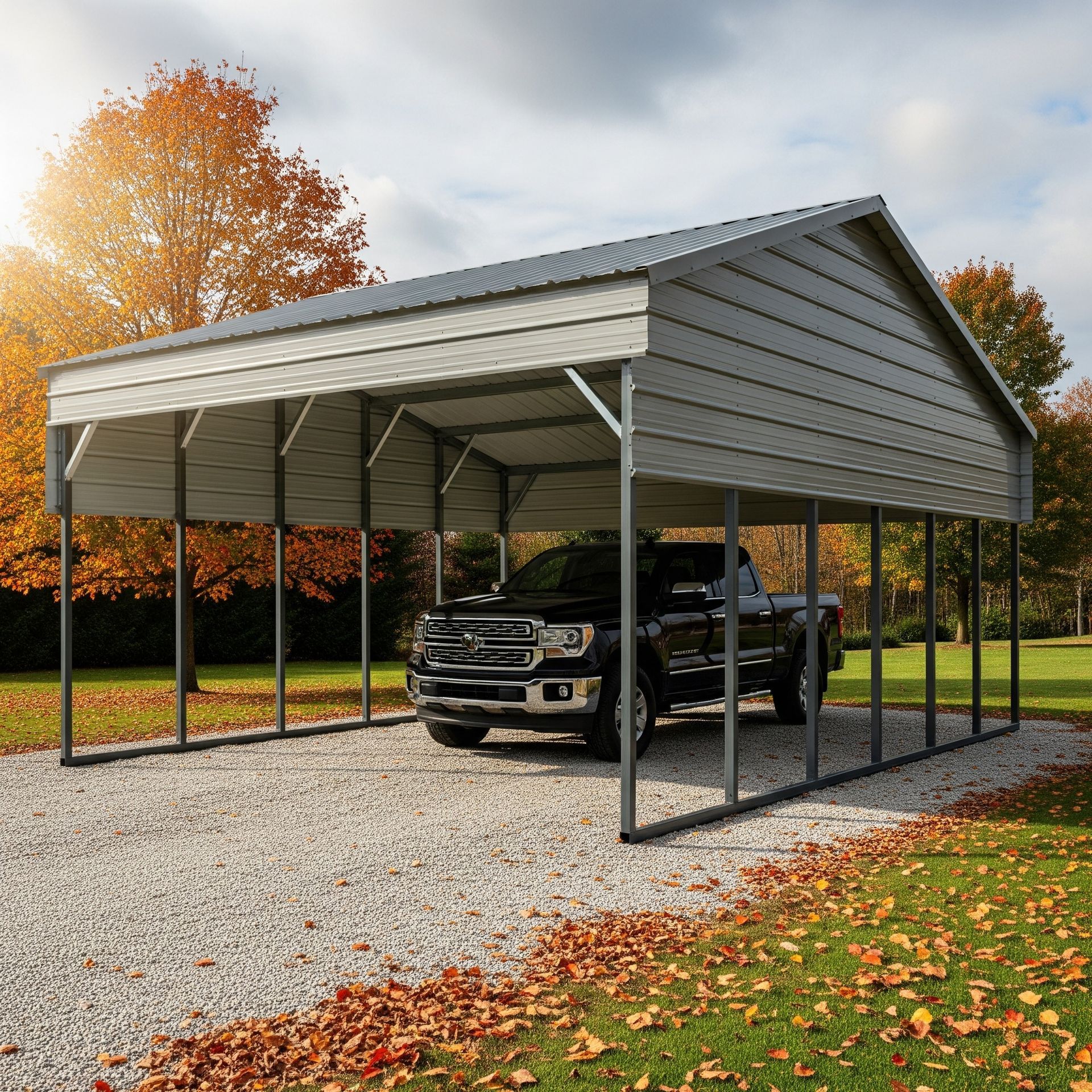How Carports Protect Your Vehicles from Colorado Hailstorms
Colorado's notorious hailstorms pose a constant threat to vehicle owners throughout the state. From the Front Range to the Eastern Plains, these weather events can transform a peaceful afternoon into thousands of dollars in automotive damage within minutes. The state experiences some of the most severe hail activity in the United States, with storms capable of producing golf ball-sized ice projectiles that can shatter windshields, dent hoods, and destroy paint finishes.
A metal carport is one of the most effective and economical solutions for protecting vehicles from hail damage. Unlike temporary solutions such as car covers or parking garage rentals, a well-constructed carport from expert builders provides permanent, reliable protection that can withstand Colorado's harsh weather conditions year after year. These structures not only shield vehicles from hail but also protect against UV damage, snow accumulation, and other environmental factors that can deteriorate automotive surfaces and mechanical components.
Key Takeaways
- Metal carports provide superior hail protection compared to fabric covers or temporary shelters
- Galvanized steel carports offer exceptional durability and corrosion resistance for Colorado's climate
- Custom metal carports can be designed to accommodate multiple vehicles and specific property requirements
- Professional installation ensures proper anchoring and wind resistance for severe weather conditions
- Investment in a quality carport structure pays for itself through prevented vehicle damage over time
- Proper design considerations include local building codes, snow loads, and drainage requirements
Understanding Colorado's Hail Risk
Colorado sits in the heart of what meteorologists call 'Hail Alley,' a region stretching from Nebraska to northern Texas that experiences the highest frequency of significant hailstorms in North America. The state's unique geography creates perfect conditions for severe thunderstorm development, with the Rocky Mountains forcing air masses upward and creating the atmospheric instability necessary for hailstone formation.
The Colorado Climate Center reports that the state experiences an average of seven to nine hail days per year in the most affected areas, with some regions seeing storms multiple times during a single season. These events typically occur between April and August, with peak activity in May and June when temperature contrasts are most pronounced.
Hailstone sizes can vary dramatically, from pea-sized pellets that cause minor surface damage to softball-sized projectiles capable of completely destroying vehicle exteriors. Even moderate hailstorms with quarter-sized stones can cause significant damage to automotive paint, while larger stones can create substantial dents, crack windshields, and damage exterior lighting and mirrors. The cost of repairs from a single Colorado hailstorm can easily exceed the price of a quality metal carport.
Why Metal Carports Excel in Hail Protection
Metal carports offer superior protection against hail damage due to their structural integrity and material properties. Unlike fabric covers that can be torn or punctured by large hailstones, metal roofing systems are designed to absorb and distribute impact forces across the entire structure. Quality steel roofing can withstand direct impacts from hailstones without compromising the protection provided to vehicles beneath.
The engineering behind effective hail protection involves several key factors. First, the roof pitch allows hailstones to bounce and roll off rather than concentrating impact forces in specific areas. Second, the gauge and quality of the metal determine impact resistance, with heavier gauge materials providing superior protection. Third, proper structural support ensures the entire system maintains integrity even under severe weather conditions.
Modern metal carport designs incorporate engineering principles that maximize protection while maintaining aesthetic appeal. The framework typically utilizes heavy-duty steel tubing that can withstand substantial wind loads and impact forces.
Galvanized Steel Advantages
A galvanized steel carport represents the gold standard for hail protection in Colorado's challenging climate. The galvanization process involves coating steel with a layer of zinc, creating a barrier that prevents rust and corrosion even when the coating is scratched or damaged. This protection is particularly important in Colorado, where temperature fluctuations, UV exposure, and occasional moisture can accelerate metal deterioration in unprotected materials.
Galvanized steel carports maintain their structural integrity and appearance for decades with minimal maintenance requirements. The material resists hail damage better than aluminum or other lightweight metals, while the galvanized coating ensures long-term durability without the need for regular painting or surface treatments. This combination of strength and longevity makes galvanized steel an excellent investment for vehicle protection, providing reliable service that often outlasts the vehicles it protects.
The weight and density of galvanized steel also contribute to overall structural stability during high winds that often accompany hailstorms. While lighter materials may flex or vibrate under wind loads, properly designed galvanized steel carports remain solid and provide consistent protection throughout severe weather events. The material's resistance to impact damage means that even after years of exposure to hailstorms, the protective capability remains uncompromised.
Design Considerations for Maximum Protection
Effective carport design goes beyond simply providing overhead coverage. The most protective structures incorporate multiple design elements that work together to shield vehicles from hail, wind-driven precipitation, and other weather-related damage. Understanding these design principles helps property owners make informed decisions about their vehicle protection needs.
Roof pitch plays a crucial role in hail protection effectiveness. Steeper pitches allow hailstones to bounce and roll away more quickly, reducing the likelihood of concentrated impacts. However, the pitch must be balanced against wind resistance and local building code requirements. Most effective carport designs utilize pitches between 3:12 and 6:12, providing excellent drainage while maintaining structural stability.
Coverage area extends beyond the vehicle footprint to account for wind-driven hail that can approach at angles. Effective designs provide additional coverage on the sides most commonly affected by prevailing storm directions. In Colorado, this typically means extending coverage toward the west and southwest, where most severe weather originates.
| Carport Size | Vehicle Capacity | Recommended Features |
|---|---|---|
| 12' x 20' | 1 Standard Vehicle | Basic gabled roof |
| 18' x 24' | 2 Vehicles | Enclosed sides, gutters |
| 24' x 36' | 3-4 Vehicles | Full enclosure options |
Custom Metal Carports for Specific Needs
Custom metal carports allow property owners to address specific protection requirements while accommodating unique site conditions and aesthetic preferences. These structures can be designed to protect multiple vehicles, incorporate storage space, or blend seamlessly with existing architecture.
Site-specific considerations include drainage patterns, prevailing wind directions, and potential snow load requirements. Professional designers evaluate these factors alongside local building codes to create structures that provide reliable protection while meeting all regulatory requirements.
Installation and Maintenance Considerations
Proper installation is critical for ensuring that a metal carport provides effective hail protection throughout its service life. Professional installation teams understand the engineering requirements for Colorado's unique climate conditions, including wind loads, snow loads, and foundation requirements that vary across different regions of the state.
Foundation requirements depend on soil conditions, local frost depth, and the specific carport design. Concrete footings provide the most secure anchoring for permanent structures, while other foundation options may be suitable for specific applications. Professional installers evaluate site conditions and recommend appropriate foundation systems that ensure structural stability during severe weather events.
Quality metal carports require minimal maintenance when properly installed with appropriate materials. Regular inspections should focus on checking fasteners, examining the roof surface for damage, and ensuring proper drainage function. Snow removal may be necessary after heavy snowfall events, although well-designed structures can typically handle normal snow loads without intervention.
Long-term maintenance involves periodic inspection of galvanized coatings and structural components. While galvanized steel provides excellent corrosion protection, addressing minor issues promptly prevents more significant problems from developing. Most quality carports maintain their protective capability and appearance for decades with basic preventive maintenance.
Cost-Benefit Analysis of Vehicle Protection
The financial benefits of installing a metal carport become clear when compared to the potential costs of hail damage repair. A single severe Colorado hailstorm can cause thousands of dollars in damage to an unprotected vehicle, while quality carport structures provide decades of protection. Insurance deductibles, rental car costs, and depreciation from damage claims add to the total cost of storm damage.
Beyond hail protection, carports provide additional financial benefits through protection from UV damage, which can fade paint and deteriorate interior materials over time. They also prevent snow and ice accumulation that can damage windshield wipers, antennas, and other exterior components. These protective benefits help maintain vehicle value and reduce long-term maintenance costs.
Investment recovery typically occurs within a few years through prevented damage costs, while the structure continues providing protection for decades beyond the payback period. Property value enhancement and potential insurance premium reductions may provide additional financial benefits that improve the overall return on investment.
Comparing Protection Alternatives
Vehicle owners have several options for protecting their cars from hail damage, each with distinct advantages and limitations. Understanding these alternatives helps property owners make informed decisions about the most appropriate protection strategy for their specific situation and budget.
Hail damage car covers represent a portable protection option that can be deployed when storms threaten. While less expensive than permanent structures, these covers require advanced warning and manual deployment, which may not always be practical. They also provide limited protection against large hailstones and offer no defense against other weather-related damage throughout the year.
Garage parking provides excellent protection but may not be available for all vehicles or in all situations. Converting existing space or constructing new garage facilities typically involves significantly higher costs than carport installation, while providing limited flexibility for multiple vehicle protection or temporary parking needs.
Commercial parking facilities offer protection during storm events but require advanced planning and ongoing costs. The inconvenience of relocating vehicles and the uncertainty of space availability make this option impractical for regular protection needs, though it may serve as a supplementary strategy during particularly severe weather forecasts.
Frequently Asked Questions
How much hail damage can a metal carport prevent?
A properly constructed metal carport can prevent virtually all hail damage to vehicles beneath it, regardless of hailstone size. Quality galvanized steel roofing is designed to withstand direct impacts from even the largest hailstones commonly experienced in Colorado.
What size carport do I need for adequate protection?
Carport size should extend beyond vehicle dimensions to account for wind-driven hail and provide easy access. A standard single-car carport should be at least 12 feet wide by 20 feet long, while two-car structures typically require 18 to 24 feet in width.
Do metal carports require building permits in Colorado?
Most Colorado municipalities require building permits for permanent carport structures, though requirements vary by location and structure size. Professional installers typically handle permit applications and ensure compliance with local building codes and zoning requirements.
How long do galvanized steel carports last in Colorado's climate?
Quality galvanized steel carports can provide decades of reliable service in Colorado's climate with minimal maintenance. The galvanized coating provides excellent corrosion protection, while proper engineering ensures structural integrity through repeated freeze-thaw cycles and severe weather events.
Can carports be customized for multiple vehicles or specific requirements?
Custom metal carports can be designed to accommodate multiple vehicles, incorporate storage space, or meet specific architectural requirements. Professional designers work with property owners to create structures that provide optimal protection while meeting aesthetic and functional goals.
Final Thoughts
Protecting vehicles from Colorado's devastating hailstorms requires a proactive approach that goes beyond hoping for advanced warning or relying on temporary solutions. A well-designed metal carport provides reliable, long-term protection that pays for itself through prevented damage while offering additional benefits, including UV protection, weather shielding, and property value enhancement. The peace of mind that comes from knowing vehicles are properly protected proves invaluable when severe weather threatens.
Investment in quality carport construction represents sound financial planning for any Colorado vehicle owner. The combination of galvanized steel durability, professional installation, and custom design options ensures that property owners can find protection solutions that meet their specific needs while providing decades of reliable service.
Keep your car protected from extreme weather conditions with a custom metal carport.
Reference:
https://climate.colostate.edu/severe_storms.html
